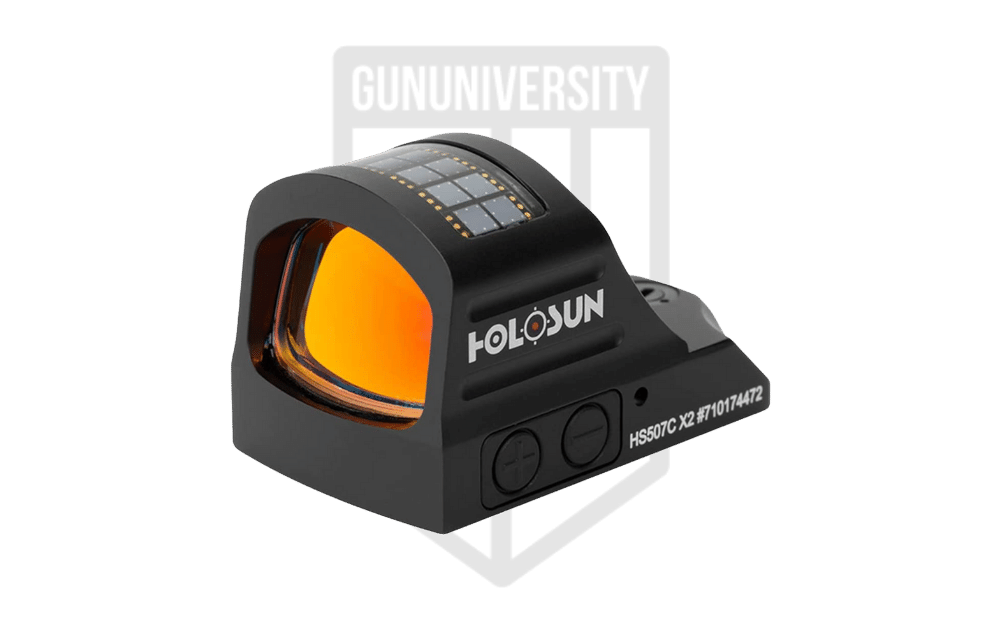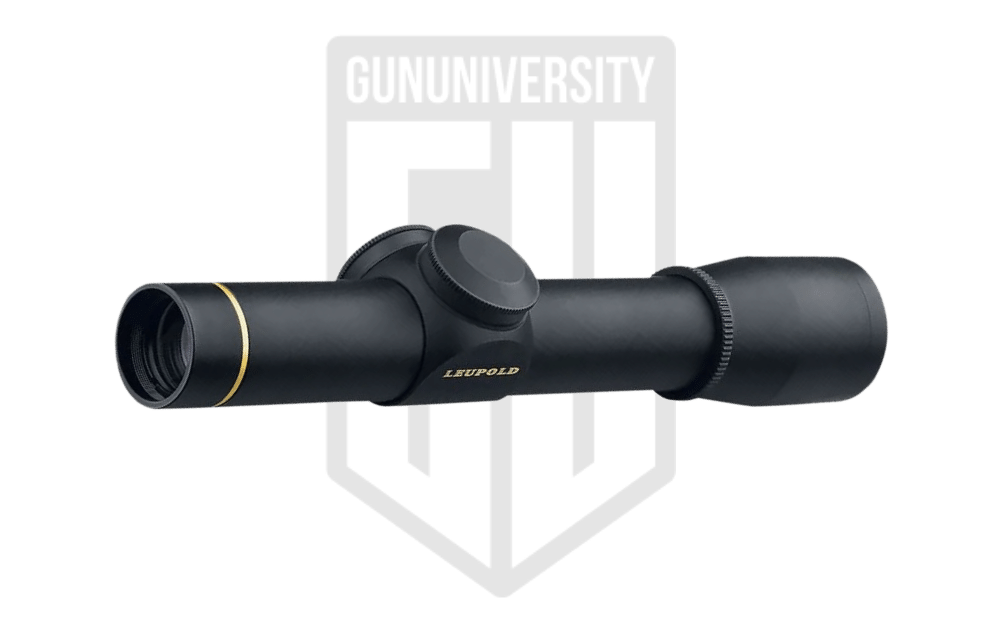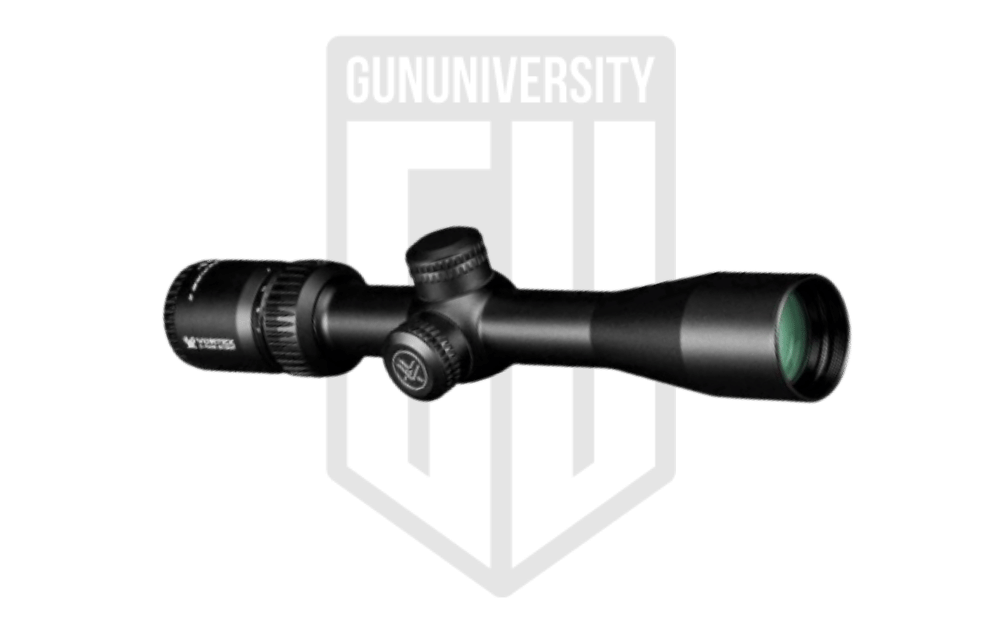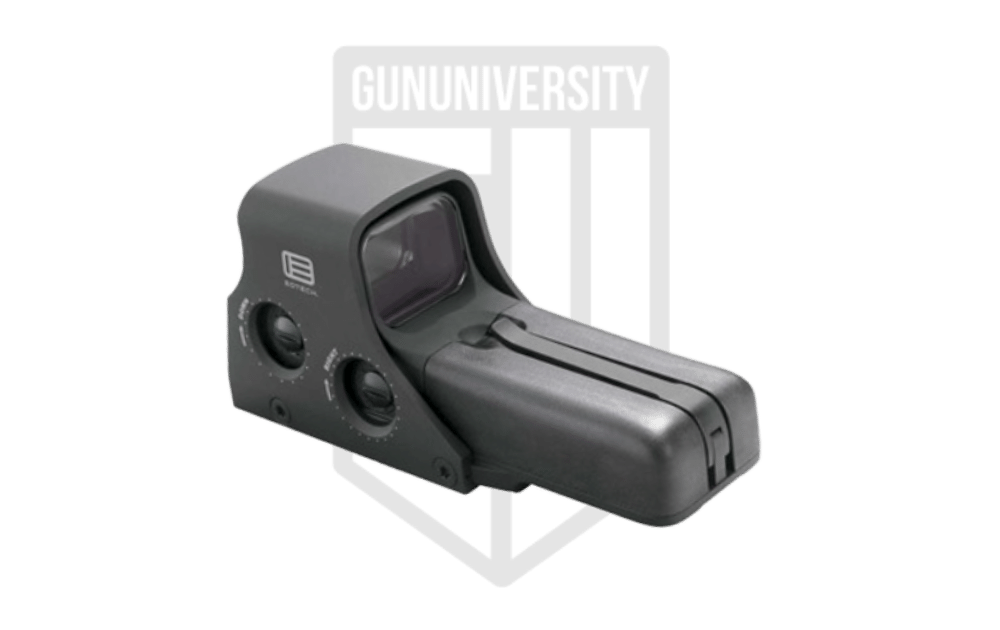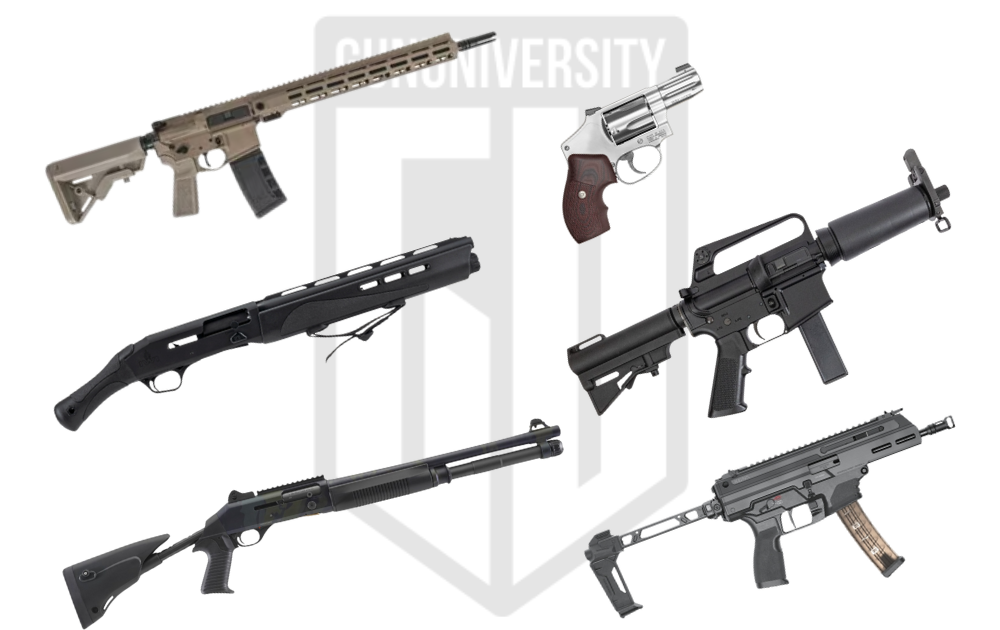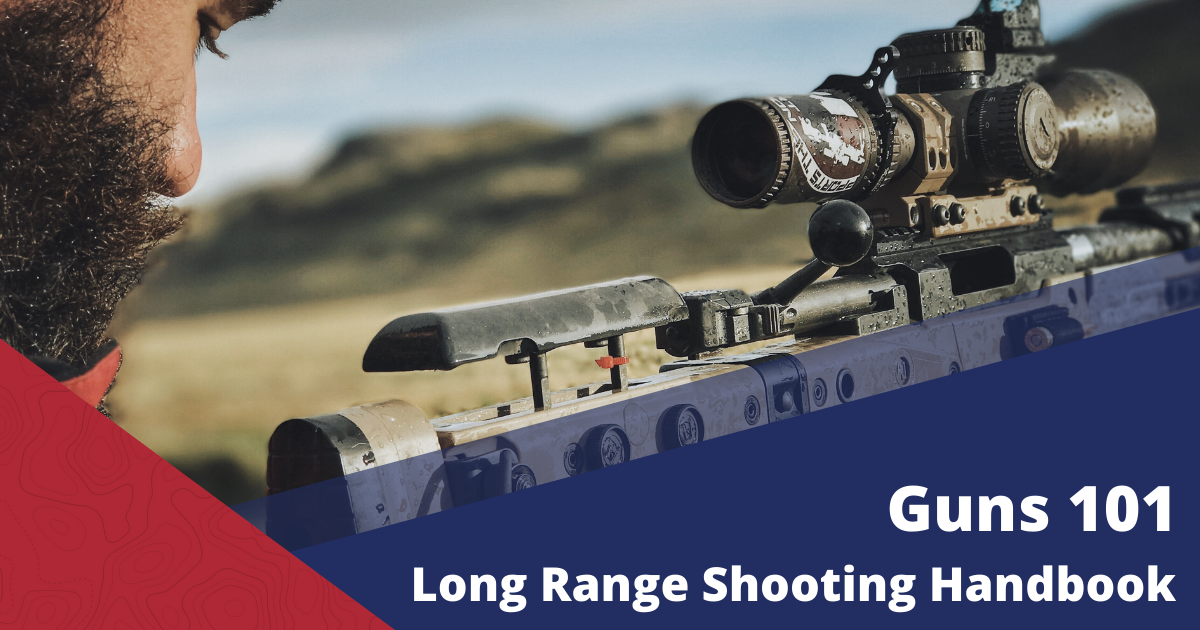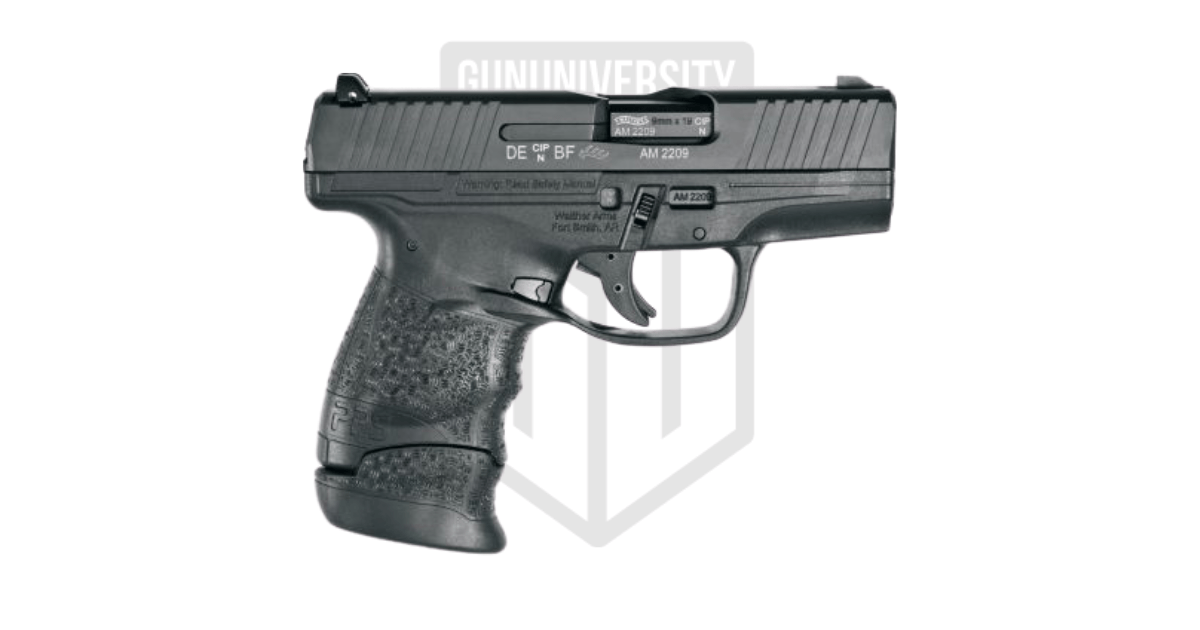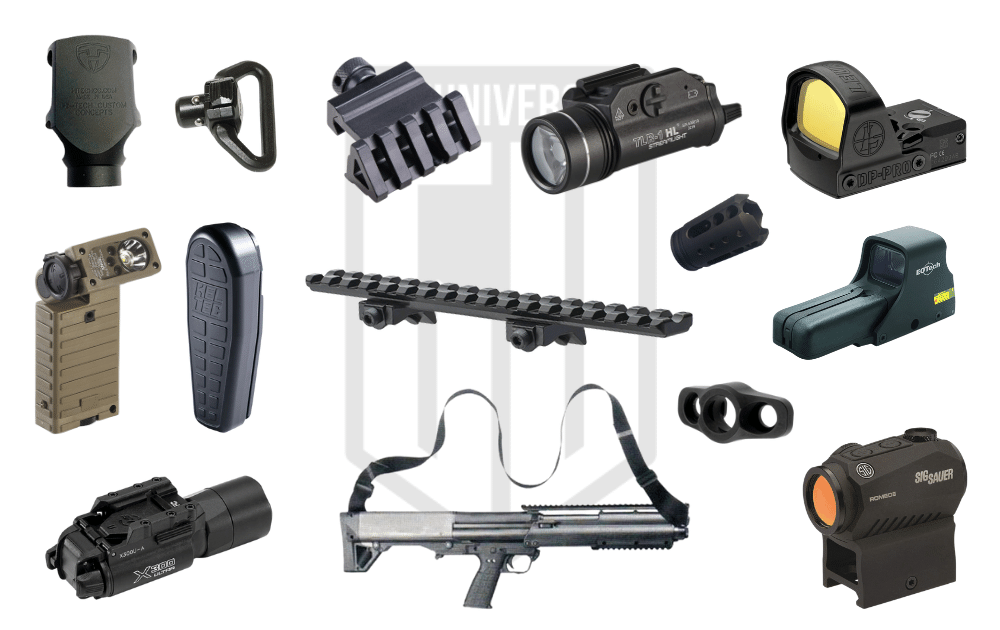Best Scope for 30–30 Lever Action Gun
The .30-30 Winchester has long been a favorite among American hunters, especially for those chasing deer and hogs. With over a century of history behind it, this round offers a solid balance of power and manageable recoil. Most often, it’s found in the classic lever-action rifle, a true icon of American firearm design. While there are a few bolt-action or single-shot rifles chambered in .30-30, the lever gun is where this cartridge really shines.
When it comes to choosing the best scope for a 30-30 lever gun, understanding the unique ballistics and characteristics of both the round and the rifle is essential. In this article, we’ll explore the top optics that complement this legendary pairing.
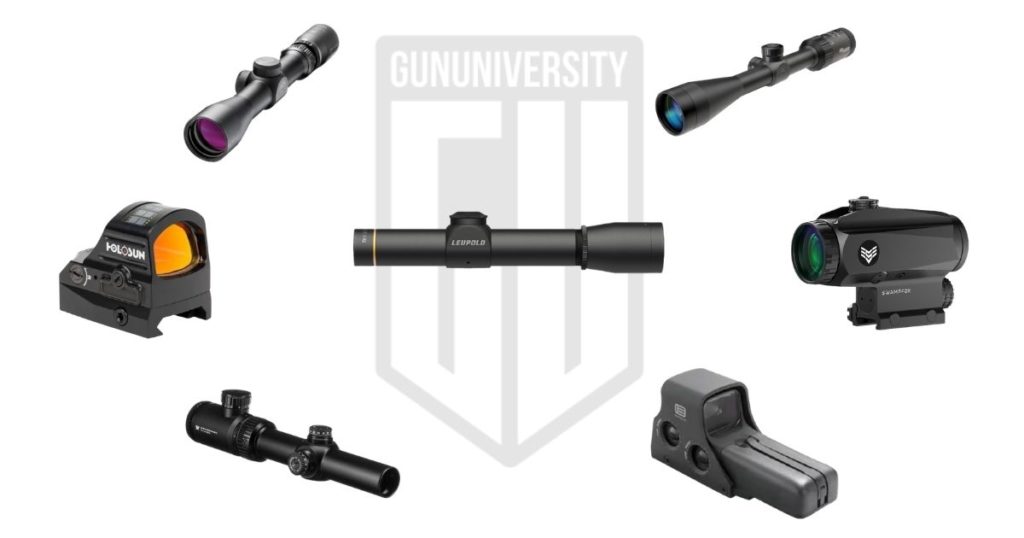
.30-30 BALLISTICS AND USE
The ole thirty-thirty works best within 300 yards or so.
It uses a spherical nose projectile versus the common pointy or spitzer round we see in most rifles. This round projectile design makes it safe for lever-action rifles. A spitzer round in a tubular magazine carries the risk of igniting, spiking the primer of the round above it, and causing a premature detonation.
.30-30 rounds are characterized by their heavyweight and relatively fast speeds. It makes the round quite potent, but only for close-range use. The projectile design limits the round’s effective range, but makes it a thumper in that range. There are heavier and faster rounds, but they often come at the cost of increased recoil.
30-30s are rather pleasant to shoot but are capable of taking deer, hog, bear, and in Canada, they are used to take moose, caribous, and pronghorn. Obviously, these animals are taken at short ranges compared to other cartridges.
With the shorter range ballistics and lever-action design, speed is often a consideration, and long-range optics are not needed. A 4-14X scope is a serious overkill for a 30-30. That being said, the optic you need for shots at less than 100 yards is different than hunters maxing out the 300-yard range. As usual, there is no perfect option, but we can include different options for different scenarios.
OPTICS FOR A 30-30
There are a few types of optics that are compatible with .30-30 rifles. Before we dive into what our favorite optics are, we need to define the three categories of optics we’ll be talking about here today. If you’re an old hand, you might not learn anything here, but for new shooters, it’s wise to know the terms we are tossing around.
RED DOT
Red dot optics are 1X optics that utilize a red dot reticle. That red dot can be green and not always just a dot. It’s a generalized term for optics designed to be used quickly in close quarters. They range greatly in size from large 30mm variants to small pistol-sized red dots. On a .30-30, you can use red dots, both big and small, without issue.
VARIABLE
Variable optics fitted with variable degrees of magnification. You can swap between various magnification ranges, and these can run both high and low. These optics are versatile and can be used at a multitude of ranges depending on the magnification rating. Size varies greatly, and the lower the magnification, the smaller the optic in general.
FIXED POWER
A fixed power scope uses one magnification level. These optics are often pinned at lower magnification settings, with a fixed power 10X optic being one of the most magnified models. It’s more common to see 1.5x to 5x fixed optics. Fixed optics are often smaller and lighter than variable optics.
How I Chose the Best Scope for 30–30 Lever Guns
As a former Marine who has spent countless hours behind the trigger of a 30-30 lever gun, I’ve had the chance to test a variety of scopes for different hunting scenarios. From my experiences, I can quickly spot which scopes deliver and which ones fall short.
But I didn’t rely solely on my own insights. I reached out to fellow seasoned shooters and hunters who really understand what makes a great scope. Their feedback was invaluable in helping me compile a solid list of the best 30-30 scopes for lever guns.
Remember, choosing a scope is a personal decision, and what works well for me might not be the best fit for you. That’s why I’ve included a range of options in this guide, along with a handy buyer’s guide to help you make an informed choice. So, let’s dive in and find the perfect scope for your 30-30!
Best 30-30 Scopes
Best Red Dot Holosun 507C | 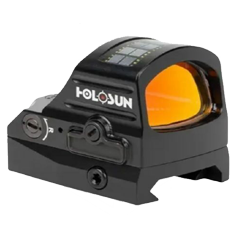 |
| Check Price |
Best Optic Leupold FX-II | 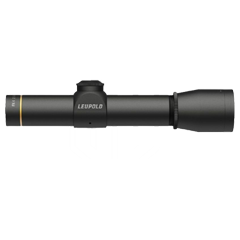 |
| Check Price |
Best Budget Burris Scout | 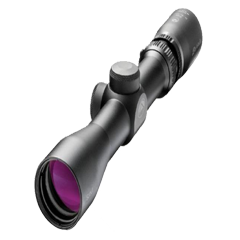 |
| Check Price |
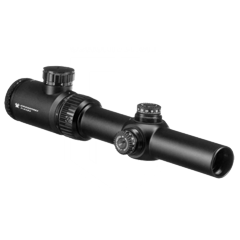 |
| Check Price | |
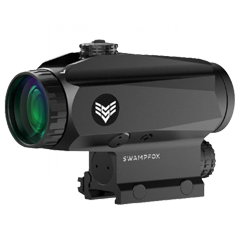 |
| Check Price | |
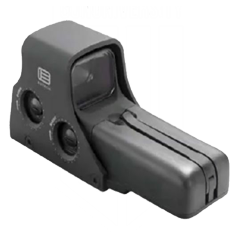 |
| Check Price | |
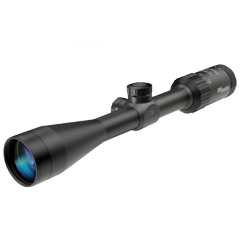 |
| Check Price |
SPEC COMPARISON OF THE BEST SCOPE FOR 30-30 LEVER GUNS
| Magnification | Obj. Lens | Tube Diameter | Eye Relief | Weight | |
|---|---|---|---|---|---|
| Holosun 507C | 1x | N/A | N/A | Unlimited | 1.5 oz |
Leupold FX-II | 2.5x | 20 mm | 1" | 4.9" | 6.5 oz |
| Burris Scout | 2-7x | 32 mm | 1" | 9.2-12" | 13 oz |
| Vortex Crossfire | 1-4x | 24 mm | 30 mm | 4" | 14.8 oz |
| Swampfox Trihawk | 3x | 30 mm | 30 mm | 2.36" | 15.4 oz |
| Eotech 512 | 1x | N/A | N/A | Unlimited | 11.5 oz |
| Sig Whiskey3 | 3-9x | 40 mm | 1" | 3.6" | 15.3 oz |
Best Red Dot Holosun 507C
Holosun 507C
An open emitter red dot sight available in either red or green with either with a multi reticle system that has 2 MOA dot and a 32 MOA circle.
HOLOSUN 507C SPECS
- Magnification 1x
- Objective Lens N/A
- Tube Diameter N/A
- Eye Relief Unlimited
- Weight 1.5 oz
Holosun optics offer a lot of optic for the money. The 507C, in particular, has become quite popular for a variety of different roles. The 507C is a mini red dot optic designed to fit everything from handguns to .30-30 rifles.
For brush hunting or home defense guns, the little Holosun 507C gives users a super small and lightweight optic for close-range performance.
The 507C’s multi reticle system is quite handy for close-range use. Swap to the 32 MOA reticle and you have a huge eye-catching reticle for rapid, on target shooting.
When hunting in the brush, you want that speed, and the same goes for home defense. Plus, the optic is small and leaves your peripheral vision open for maximum situational awareness. Holosun’s little 507C is quite durable, and my personal model has been through well over a thousand rounds of buckshot on a 12 gauge without stuttering.
On a .30-30, I’ve experienced zero reliability issues. It can handle rain, shock, and recoil with ease. Plus, the added solar panel is a great backup if the battery runs low, ensuring I can always depend on it. The 507C is designed to fit a Trijicon RMR footprint, which gives me plenty of mounting options. All these features combined make the Holosun 507C the best red dot I’ve used, seamlessly blending performance, durability, and versatility.
You can read the full review of the Holosun 507C here.
HOLOSUN 507C PROS AND CONS
- Small
- Affordable
- Versatile
- Limited medium and long-range use
LEUPOLD FX-II 2.5×20 SPECS
- Magnification 2.5x
- Objective Lens 20 mm
- Tube Diameter 1″
- Eye Relief 4.9″
- Weight 6.5 oz
If you want an optic that’s light, affordable, relatively simple, and magnified for your .30-30, then consider the FX-II 2.5×20. It’s the best optic on this list, and I’ll tell you why.
This little fella is well suited for close to moderate range on a .30-30. It’s an oddball rifle scope compared to most but well done for the .30-30 cartridge.
Leupold optics offer excellent clarity and a bright and wide picture. The low magnification setting results in two benefits for the .30-30s close range power. First, we get a generous eye relief and a big eye box. You can get right behind the optic and get on target quite quickly.
Additionally, the field of view is almost 40 feet wide at 100 yards.
You have the ability to get on target quickly but also to make precise shots with the extra magnification. The Leupold FX-II 2.5×20 seems to be perfectly designed for moderate range lever-action rifles. Inside the optic is a simple duplex reticle that keeps your field of view nice and clear.
If you wear glasses, this might be one of the better optics for you. The eye relief grants the use of glasses with ease. The slight magnification can correct your vision and still allow for close-range shots.
At only 6.5 ounces, the FX-II 2.5×20 keeps your rifle light as well. Leupold has a long history of making excellent optics for police forces, the US Military, and sportsmen. As expected, the optic is water and shockproof. It will shake off the elements with ease.
LEUPOLD FX-II 2.5×20 PROS AND CONS
- Super lightweight
- Generous eye relief
- Well suited for the .30-30 cartridge
- 2.5X can feel limiting at 200 yards and beyond.
Best Budget Burris Scout
BURRIS SCOUT 2-7×32 SPECS
- Magnification 2-7x
- Objective Lens 32 mm
- Tube Diameter 1″
- Eye Relief 9.2-12″
- Weight 13 oz
.30-30 is an old cartridge, and as such, there are lots of popular .30-30 rifles that were designed in the 1800s and 1900s. Many lack modern optics accouterments, like the Winchester 94. These will often require a long eye relief scope that places the optic rather far from the shooter.
If that sounds like your situation, the Burris Scout 2-7X32 is an excellent choice and arguably the best budget scope for your needs.
Burris offers you 9.2 to 12 inches of eye relief. Shooters can place it well beyond the action and still have a competent magnification rating for hunting.
2-7X is underrated in the modern world, where more magnification is often thought of as better. 2-7X gives you both close range aiming performance all the way to 7X, which conquers that 300-yard max range the .30-30 is equipped with.
The Ballistic Plex reticle is simple and provides an unobstructed vision. A series of drop points allows you to accurately estimate bullet drop at various ranges. It will take some experimenting to get right but will allow you to make the most out of the .30-30’s range.
Integrated, low-profile fingertip adjustable turrets are a nice touch. As well as the single-piece tube construction for maximum precision.
Burris makes tough optics at a great price, and the Scout 2-7X can take a beating. It’s water and shockproof, so the field doesn’t stand a chance to break it. My biggest complaint is the 13-ounce weight. When you shift the weight forward of the center of the gun, you will make it front heavy and off-balance.
BURRIS SCOUT 2-7X32 PROS AND CONS
- Ultra-long eye relief
- Excellent magnification options
- Rugged and durable
- Somewhat heavy
VORTEX CROSSFIRE 2 1-4×24 SPECS
- Magnification 1-4x
- Objective Lens 24 mm
- Tube Diameter 30 mm
- Eye Relief 4″
- Weight 14.8 oz
Low-powered variable optics famously rule the roost of modern tactical rifles. Limiting LPVOs just to AR-type rifles is a smooth brain move. These optics are too versatile to be limited to ARs.
The Vortex Crossfire 2 1-4×24 with the V Brite reticle makes your .30-30 one helluva versatile option.
At 1X with the V Brite reticle, you have what’s basically a red dot with eye relief and an eye box. It’s not as good as a red dot, but close enough to be more than competent.
Dialing in the magnification allows you to reach out and make easy shots at 300 yards and closer.
The Crossfire 2 uses Vortex’s proprietary coatings to help increase light transmissions. This is more noticeable on their more powerful optics, but it helps here. Low light is common when hunting and dealing with later afternoons and early evenings. The smaller 24mm objective lens does limit some light potential, but for 90% of shots, it will do.
This would be the optic I’d use on a general-purpose knock-around rifle. The combination of a .30-30 and the Crossfire 2 1-4x could be used to deal with pests, to hunt with, and even for home defense.
The Crossfire 2 is relatively affordable and offers a good deal of features and durability for the money.
VORTEX CROSSFIRE 2 1-4×24 PROS AND CONS
- Versatile
- Affordable
- Easy to Use
- Heavy
SWAMPFOX TRIHAWK SPECS
- Magnification 3x
- Objective Lens 30 mm
- Tube Diameter 30 mm
- Eye Relief 2.36″
- Weight 15.4 oz
The Marine in me loves prism optics. I used an ACOG for five years and was always pleased with its performance. Maybe that’s my bias? Anyway, that doesn’t mean the Trihawk isn’t a good option for .30-30 lever guns.
Specifically, the MOA reticle version, the alternative is a bullet drop compensating reticle tuned for the 5.56 round.
The MOA variant only requires you to know your drop-in inches, and you can direct rounds as necessary. As the name implies, the Trihawk has a 3x magnification setting, and as a prism scope, that magnification is fixed.
In the center of the reticle is an illuminated reticle that is eye gripping and easy to see. An etched reticle ensures that even when batteries die, you can still shoot.
The magnification is perfectly suitable for most .30-30 shooting. For hunting or as a truck gun, the prism provides a compact and durable option.
The optic is a compact scope in terms of length, but it seems bulbous. That roundness is due to a large objective lens that gives you an impressive 52-foot field of view and a very bright picture due to a 9.5mm exit pupil.
Prism optics take a beating, unlike other magnified optics. The simplicity of the optic makes it tough to beat. With relatively few failure points, it can take a beating and keep on functioning.
SWAMPFOX TRIHAWK PROS AND CONS
- Affordable
- Massive FOV
- Bright and Clear picture
- Sits high for a lever gun
EOTECH 512 SPECS
- Magnification 1x
- Objective Lens N/A
- Tube Diameter N/A
- Eye Relief Unlimited
- Weight 11.5 oz
One of the OG Eotechs, the 512, might have some age on it, but it’s still kicking around. The Eotech 512 has found a second life in the non-tactical world as a hunter’s optic.
So much so Eotech even makes a camouflage model. While technically this a holographic sight, it’s often referred to as a red dot.
Like a red dot, it’s a close-range optic designed for speed and precision. The famed -0 reticle gives you a 68 MOA ring and a 1 MOA center dot. It’s more than eye-catching and makes it easy to get on target rapidly.
For brush hunters or home defenders, the 512 gives you speed when you need it most.
It’s dead nuts reliable, simple to use, and tough to beat durability-wise. The open-top design is often preferred for maximum peripheral vision and gives you a nice open heads-up display. The 512 will work in a standard setup and a long eye relief setup.
EOTech has long been proven durable by its service with some of our nation’s elite warfighters. The 512 might be the simpler model, but it’s still robust and a real fighter. It’s not just waterproof but can be submerged. It’ll shake off shock from a .30-30 without issue and can easily take the abuse a hard-living optic will be submitted to.
EOTECH 512 PROS AND CONS
- Perfect for close range
- Durable
- Well-proven
- Expensive
#7 SIG SAUER WHISKEY3

SIG SAUER WHISKEY3 SPECS
- Magnification 3-9x
- Objective Lens 40 mm
- Tube Diameter 1″
- Eye Relief 3.6″
- Weight 15.3 oz
SIG Sauer calls themselves a total systems provider, and they are living up to that reputation. Guns, suppressors, handguards, lights, and of course optics are all now in SIG Sauer’s wheelhouse.
The Whiskey3 represents a high-quality but simplistic and affordable hunting optic for your .30-30. This 3-9X variable optic isn’t fancy by any means.
Instead, it just excels in the basics of being a good optic at an affordable price point.
3-9X variable magnification has long been the choice of modern hunters.
It provides enough magnification to accomplish most tasks 25 yards and beyond.
A basic quadplex reticle provides you a simple aiming point that keeps the field of view nice and unobstructed. The low dispersion glass is clearer than most rifle scopes in this price range by a good margin. Quarter MOA adjustments allow for more precision than needed for the ole .30-30.
Another impressive feature is the IPX-7 waterproof rating. The Whiskey3 can swim in a meter of water for up to 30 minutes. It won’t have issues with a little rain or snow. As I stated in the beginning, it’s not fancy. It just does a good job of accomplishing the basics. If you are hunting for a hunting optic, then the Whiskey3 is an excellent go-to.
SIG SAUER WHISKEY3 PROS AND CONS
- Affordable
- Robust
- Simplistic
- Zero reticle illumination
HOW TO CHOOSE YOUR 30-30 OPTIC
You gotcha your 30-30 rifle, be it a Rossi, a Marlin, a Mossberg, or Winchester, it doesn’t matter. You have it, and you want an optic on it. I gave you more than a few options above, but what will work best for you.
To figure this out, you’ll need to identify your intended role of the rifle.
BRUSH HUNTING
Brush hunters are well served by a red dot optic. In the thick brush, magnification can be a hassle, and when your shots are 50 yards or even closer, you want to get on target fast. A red dot makes it so superbly easy to get the gun on target and accurately place a well-aimed shot on your chosen game.
Besides speed on target, a red dot keeps the gun small and less likely to catch on brush. Red dots are typically lighter in weight, and that makes carrying the rifle through thickets more comfortable overall.
PEST CONTROL
My grandfather used a .30-30 as his ride-along gun. The 30-30 was tasked with killing hogs in the garden, coyotes in the fields, and dispatching all sorts of pests from 5 to 200 yards. He used iron sights, but I would use a low-powered optic. The ole 30-30 is very versatile in this role and can be used as a truck gun for both dispatching animals and self-defense.
A 3x, 4x, 2.5x, or even an LPVO for maximum versatility. I want to be able to shoot venomous snakes at close range but also reach out and touch a wily coyote at a few hundred yards if need be. If it’s a ride-around gun, the optic needs to be good and tough. It needs to be bounced around the proof and water-resistant as well.
TRADITIONAL HUNTING
Sitting in the deer blind or in a tree stand with a clear firing lane is a relaxing way to gather venison for the year. In these roles, the range might be extended a good bit, and higher magnification could be rather useful. You can scan the tree line in-depth and ensure you place your shot humanely.
A 2-7x or 3-9x optic is perfect for the 30-30. These are both traditional optics that have long ruled the hunting realm. Since we also live in 2021, the world of LPVOs is also wide opened. A 1-6x or 1-8x would serve extremely well in this role.
HOME DEFENSE
Who uses a lever-action rifle for home defense? Well, if you live in a less gun-friendly state, then a lever-action might be the best option for a restricted state. The industry has responded to such, and Henry has produced the X series in 30-30 for a reason.
This powerful cartridge and the rapid nature of a lever-action rifle make it a proficient caliber and rifle option. For home defense, we go back to the red dot. It’s such close range that you need speed more than anything else, and magnification certainly isn’t needed inside the home.
For home defense, you want a tough optic you can rely on. Do not slouch in this department. Size-wise, either a mini or standard red dot is fine. Since it’s a home defense rifle, you’ll likely benefit from a larger reticle that’s faster to acquire than a smaller dot.
MOUNTING OPTIONS
The rifle you have can make a big difference in the optic you choose. Marlin makes it easy with a side ejection gate and a rail for optics. The ole Winchester 94 and its derivatives have top ejection, which requires either an odd side mount or a forward mount.
If you need to mount the optic forward of the action, you’ll need either an optic with a long eye relief or unlimited eye relief. Unlimited eye relief means a red dot typically, and long eye relief scopes mean something like a scout scope if you want magnification. Examine and understand your mounting options.
Also, keep in mind you have a hammer at the rear of your gun. This hammer can interfere with an optic if it’s too long or too wide.
GENERAL PURPOSE OPTIC ADVICE
In general, there are a few things everyone who shops for optics should know.
CLARITY
You want a nice clear lens, especially for a hunting rifle. When hunting deer or similar creatures, it will likely be in somewhat low light. Deer like to move as the sun rises and sets. With that in mind, you want a good clear optic to help defeat the darkness that’s moving in.
Clarity also ensures you can see the deer in the foliage around you. If you are using a 30-30, it’s safe to assume the area is likely in a slight thicket, and if it’s fall and winter deer season, the deer’s hide will match the colors of the leaves.
A good clear optic makes it easy to see your game of choice in low light and in vibrant color.
DURABILITY
Hunting often exposes your weapon and optics to the terrible world around you. Sometimes that world is wet, sometimes it’s dusty, and maybe even some snow is kicking up. Those elements can test your optics, and if they are subpar, they are going to fall apart.
The phrase, “You get what you pay for.” is never more true than with optics. Cheap optics give you poor performance and are unlikely to last long in the field. Especially when we factor in the rough handling, most hunters treat their guns with.
The optics we listed above are well suited for the rough environments hunters can face and can take most of the abuse you can throw at them.
WEIGHT
Lighter is better for 30-30 optics, especially if you intend to use ultra-close ranges. At close ranges, speed rules and lighter rifles are faster rifles. When brush hunting, you also want to get the rifle up and on target quickly. This is especially true if the animal is walking or running.
Since the 30-30 rules at short-range hunting, there isn’t a major need to toss on a big heavy optic. Plenty of lightweight optics are magnified sufficiently enough to take advantage of the 30-30 round without being boat anchors.
When choosing the above optics, I certainly prioritized weight savings when possible.
ROCK THE LEVER
Lever action .30-30s rule and have populated the American rifle realm for over a century for a reason. It’s killed more deer than any other cartridge and is popular enough that new rifles are coming out every year or so for the ole .30-30. If you want to get the most out of your .30-30, then you’re gonna need an optic. Hopefully, you have a better idea of what works, and if you have any questions, ask below.
If you have any good optic suggestions, feel free to drop those below as well.
Best Scope for 30–30 Lever Guns -FAQs
What features should I look for in a compact rifle scope for a 30-30 lever gun?
When picking a compact rifle scope for your 30-30 lever gun, aim for low to moderate magnification—typically between 2-7x or 3-9x. This range suits the effective shooting distance of the cartridge. You’ll also want a wide field of view for quick target acquisition and durable construction to handle rugged use. A compact scope helps keep your rifle balanced and easy to maneuver, which is perfect for those fast shots in tight spots.
Should I choose a traditional scope for my 30-30 lever-action rifle?
Traditional scopes with low to moderate magnification (like 2-7x or 3-9x) fit nicely with lever-action rifles. They offer a straightforward aiming solution ideal for the hunting distances you’ll typically encounter with a 30-30. Plus, their simple design keeps things reliable, making them a favorite among many 30-30 enthusiasts.
Is an aperture sight a good option for my 30-30 lever gun?
Aperture sights, or peep sights, are great if you prefer a more streamlined setup or want a backup to your scope. Many hunters appreciate them for quick target acquisition, especially in thick woods. While they don’t have magnification, they provide a clear sight picture for shorter-range shots, which works well for what you’ll be doing with a 30-30.
What type of hunting scope works best on a 30-30 lever-action rifle?
For a hunting scope on your 30-30 lever gun, look for something in the 2-7x or 1.5-5x magnification range. These give you just enough power for typical hunting situations without adding extra weight or bulk. They’re perfect for quick shots at medium distances, especially in brush or wooded areas where the 30-30 shines.
How does reticle visibility affect performance on a 30-30 lever-action rifle?
Reticle visibility is key, especially when hunting in low light or dense cover—common scenarios for 30-30 users. A simple, bold reticle like a duplex works wonders, letting you pick up targets quickly without cluttering your view. If you hunt at dawn or dusk, consider a scope with an illuminated reticle for better visibility without needing too much magnification, which you typically don’t need for 30-30 distances.
Recent Posts
December 15, 2025
December 15, 2025
December 12, 2025
December 12, 2025

